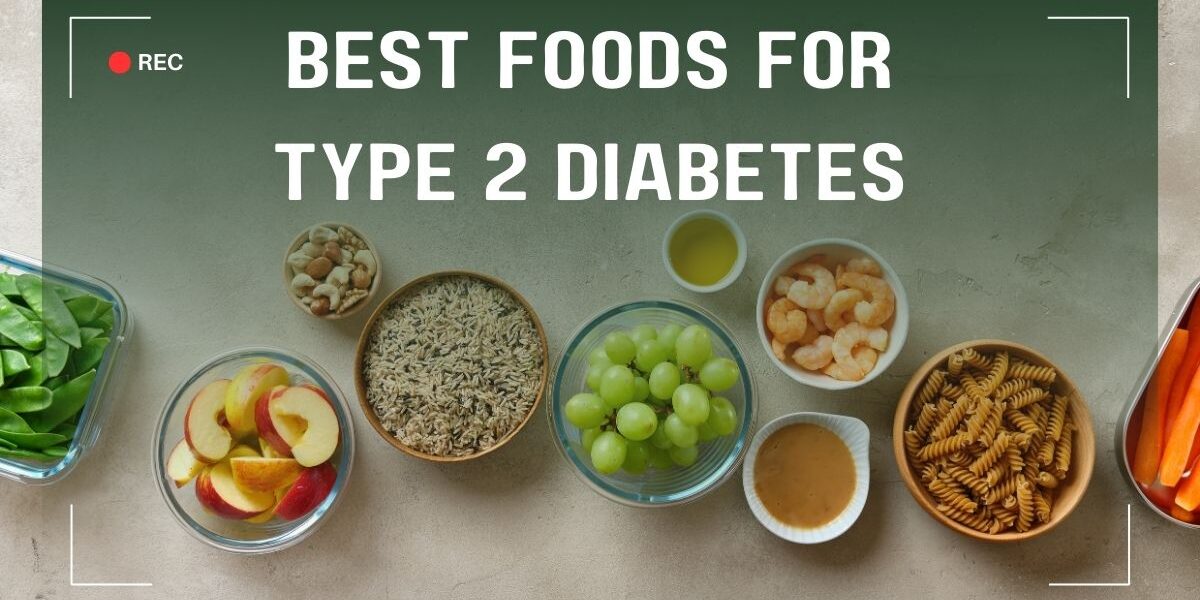Managing Type 2 diabetes effectively requires a well-planned diet that helps stabilize blood sugar levels. The right foods can make a significant difference in maintaining healthy glucose levels and preventing complications. In this guide, we’ll explore the best foods to include in your diet if you have Type 2 diabetes.
Top Foods for Managing Type 2 Diabetes
1. Leafy Greens
- Examples: Spinach, kale, Swiss chard, and collard greens.
- Why: Leafy greens are low in calories and carbohydrates but high in fiber, vitamins, and minerals like magnesium, which plays a role in insulin regulation.
2. Fatty Fish
- Examples: Salmon, mackerel, sardines, and trout.
- Why: Fatty fish are rich in omega-3 fatty acids, which reduce inflammation and improve heart health—a crucial consideration for people with diabetes.
3. Whole Grains
- Examples: Brown rice, quinoa, barley, and whole-wheat products.
- Why: Whole grains have a lower glycemic index and are packed with fiber, which helps control blood sugar levels by slowing down digestion.
4. Beans and Legumes
- Examples: Black beans, chickpeas, lentils, and kidney beans.
- Why: High in protein and fiber, legumes help stabilize blood sugar and keep you full longer, reducing the risk of overeating.
5. Berries
- Examples: Blueberries, strawberries, raspberries, and blackberries.
- Why: Berries are low in sugar and high in antioxidants, making them a great choice for satisfying your sweet tooth without spiking blood sugar levels.
6. Nuts and Seeds
- Examples: Almonds, walnuts, chia seeds, and flaxseeds.
- Why: Nuts and seeds are high in healthy fats, fiber, and protein, which can help reduce insulin resistance and support heart health.
7. Greek Yogurt
- Why: Greek yogurt is higher in protein and lower in carbs compared to regular yogurt, making it an excellent option for stabilizing blood sugar levels. Choose plain, unsweetened varieties.
8. Avocados
- Why: Avocados are rich in monounsaturated fats, which can improve insulin sensitivity. They also contain fiber, making them a filling and diabetes-friendly food.
9. Eggs
- Why: Eggs are a versatile source of high-quality protein and contain essential vitamins and minerals. They have a minimal impact on blood sugar and can be included in various meals.
10. Cinnamon
- Why: Cinnamon has been shown to improve insulin sensitivity and lower blood sugar levels. It’s a flavorful addition to many dishes, from oatmeal to smoothies.
Foods to Avoid or Limit
While including the best foods for Type 2 diabetes is essential, it’s equally important to avoid or limit foods that can spike blood sugar levels. These include:
- Refined Carbohydrates: White bread, pastries, and sugary cereals.
- Sugary Drinks: Sodas, fruit juices, and sweetened teas.
- Processed Foods: Chips, cookies, and other snacks high in unhealthy fats and sugars.
- High-Sodium Foods: Processed meats, canned soups, and fast foods.
Sample Meal Plan Incorporating Best Diabetes-Friendly Foods
Here’s a sample meal plan that includes some of the best foods for Type 2 diabetes:
- Breakfast: Scrambled eggs with spinach and a side of whole-grain toast.
- Snack: A small handful of almonds and a few berries.
- Lunch: Grilled salmon with quinoa and a mixed greens salad with avocado.
- Snack: Greek yogurt topped with chia seeds and a sprinkle of cinnamon.
- Dinner: Lentil soup with a side of steamed broccoli and a slice of whole-grain bread.
FAQs About Foods for Type 2 Diabetes
. Can I eat fruit if I have Type 2 diabetes?
- Yes, fruit can be included in a Type 2 diabetes diet. Opt for low-glycemic fruits like berries, apples, and pears, and enjoy them in moderation.
2. How do whole grains help with blood sugar control?
- Whole grains are high in fiber, which slows down the absorption of glucose into the bloodstream, leading to more stable blood sugar levels.
3. Is it okay to eat fatty foods like avocado if I have diabetes?
- Yes, healthy fats like those found in avocados are beneficial for insulin sensitivity and can be part of a balanced diet for diabetes management.
Conclusion
Incorporating these diabetes-friendly foods into your diet can significantly improve your ability to manage Type 2 diabetes. By focusing on whole, nutrient-rich foods and avoiding those that spike blood sugar levels, you can maintain better glucose control and reduce the risk of complications.
Consistency is key, so aim to include these foods in your daily meals and snacks to support your overall health and diabetes management.





